Abstract
Liposome-entrapped streptomycin (SM) was compared with free SM for therapeutic efficacy against experimental salmonellosis in mice. All of the mice infected with the virulent strain of Salmonella enteritidis 116-54 died between days 5 and 7, and a dose of 20 mg of free SM per kg administered 24 h after the bacterial inoculation did not prolong the survival. In contrast, the same dose of SM entrapped in liposomes prolonged paralleled the dose in the liposomes, and a dose as low as 1.2 mg of SM per kg in liposomes prolonged the survival. The advantage of using liposomes was more pronounced when a larger dose of SM was employed. The liposome-entrapped drug was less toxic than the free drug. A dose of 80 mg of free SM per kg caused convulsions, but the same dose entrapped in liposomes caused no side effects. Furthermore, two doses of liposome-entrapped SM further enhanced the therapeutic effect. The efficacy of the liposome-entrapped drug was still observed in mice infected with a large inoculum of S. enteritidis. A tissue distribution study on SM in various organs demonstrated that liposomal SM was selectively delivered to the spleen and liver with concentrations in these those in mice receiving the free drug. The prolongation of survival was due to suppression of the multiplication of S. enteritidis as demonstrated by viable cell counts in the spleens.
Full text
PDF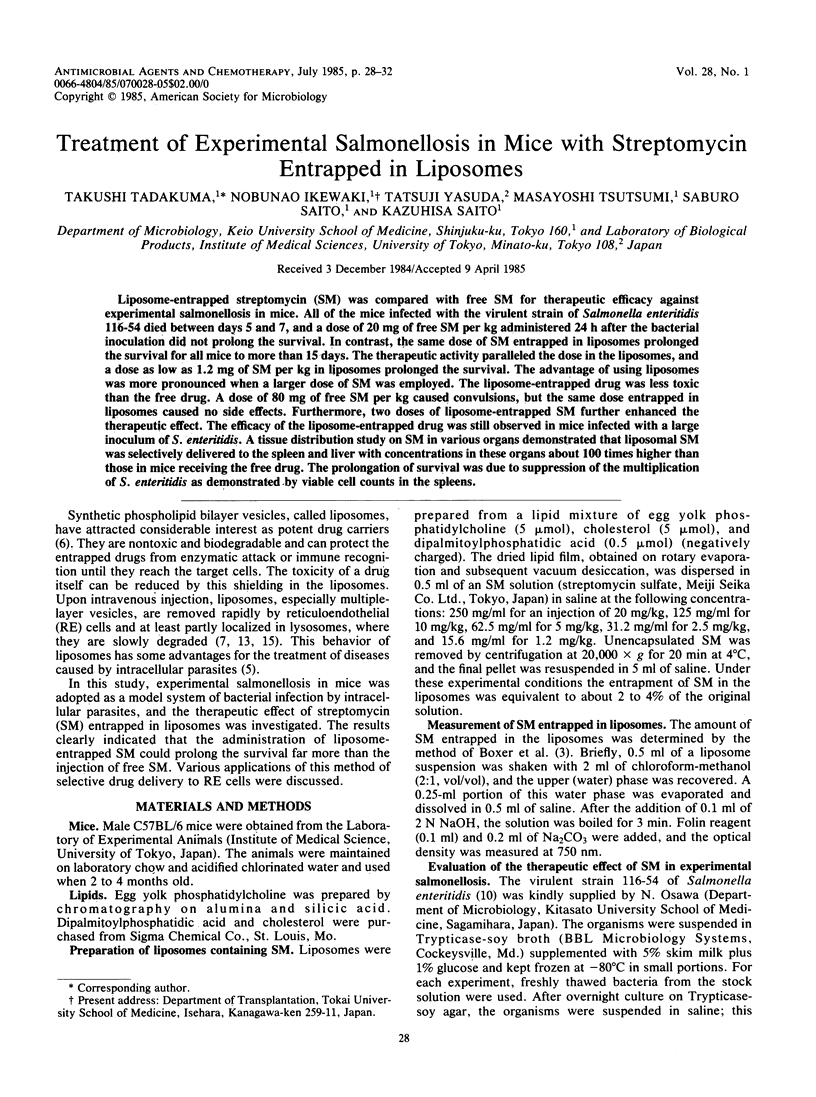
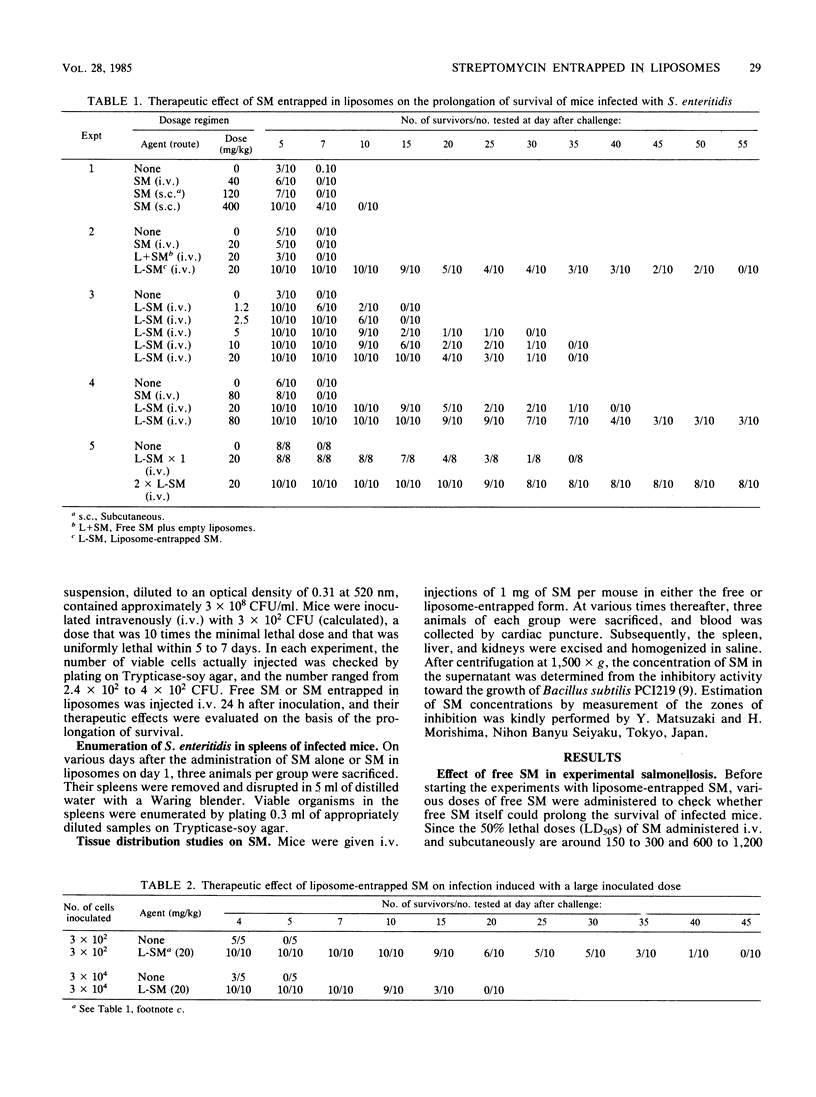
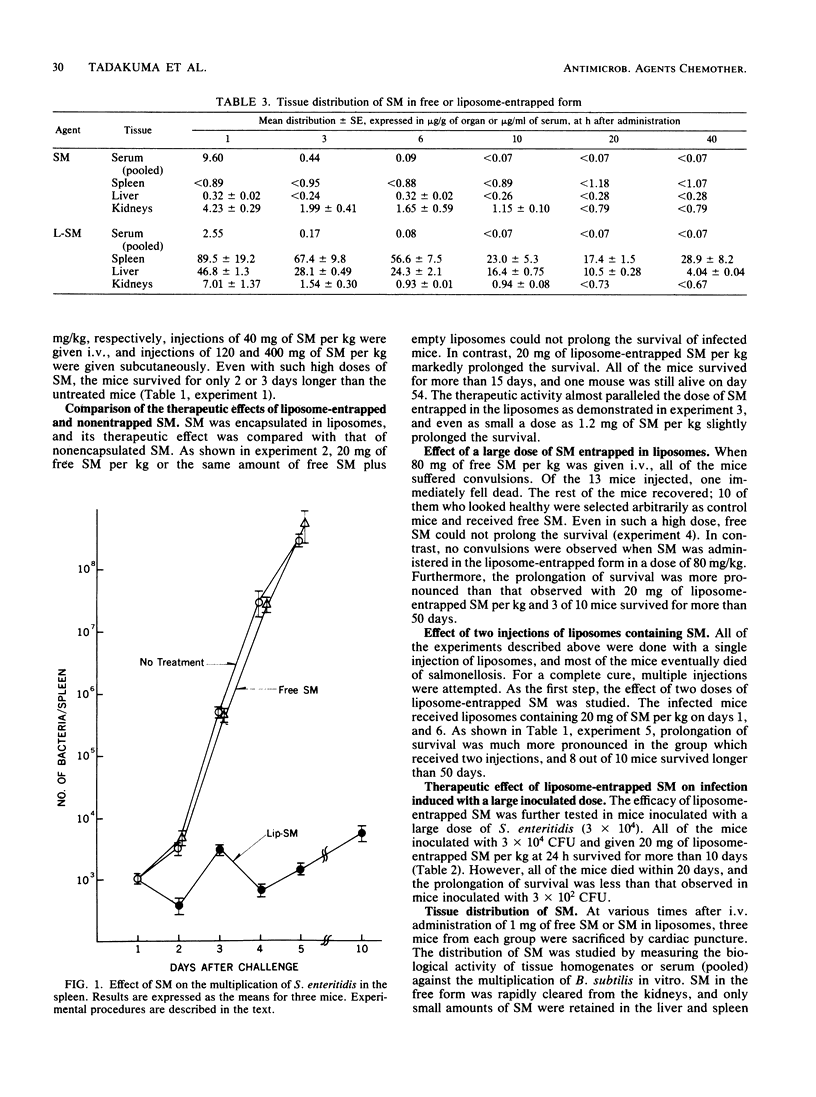
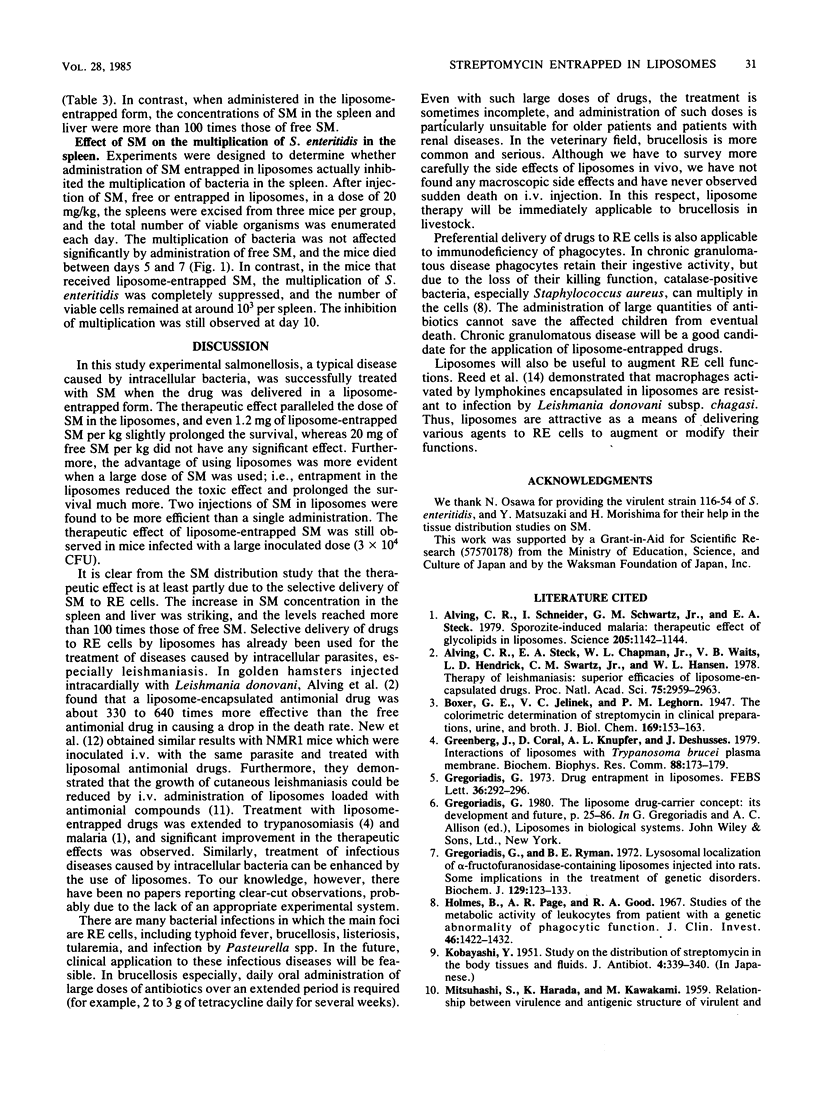
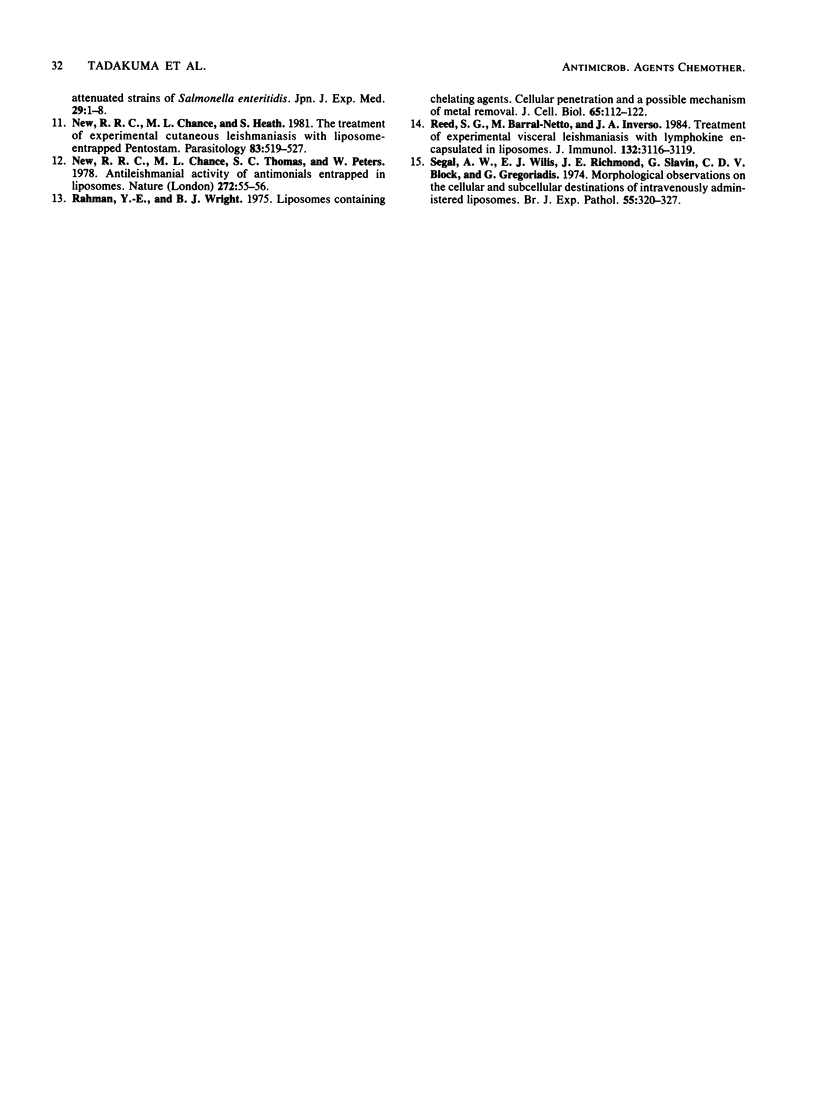
Selected References
These references are in PubMed. This may not be the complete list of references from this article.
- Alving C. R., Schneider I., Swartz G. M., Jr, Steck E. A. Sporozoite-induced malaria: therapeutic effects of glycolipids in liposomes. Science. 1979 Sep 14;205(4411):1142–1144. doi: 10.1126/science.382358. [DOI] [PubMed] [Google Scholar]
- Alving C. R., Steck E. A., Chapman W. L., Jr, Waits V. B., Hendricks L. D., Swartz G. M., Jr, Hanson W. L. Therapy of leishmaniasis: superior efficacies of liposome-encapsulated drugs. Proc Natl Acad Sci U S A. 1978 Jun;75(6):2959–2963. doi: 10.1073/pnas.75.6.2959. [DOI] [PMC free article] [PubMed] [Google Scholar]
- Gregoriadis G. Drug entrapment in liposomes. FEBS Lett. 1973 Nov 1;36(3):292–296. doi: 10.1016/0014-5793(73)80394-1. [DOI] [PubMed] [Google Scholar]
- Gregoriadis G., Ryman B. E. Lysosomal localization of -fructofuranosidase-containing liposomes injected into rats. Biochem J. 1972 Aug;129(1):123–133. doi: 10.1042/bj1290123. [DOI] [PMC free article] [PubMed] [Google Scholar]
- Holmes B., Page A. R., Good R. A. Studies of the metabolic activity of leukocytes from patients with a genetic abnormality of phagocytic function. J Clin Invest. 1967 Sep;46(9):1422–1432. doi: 10.1172/JCI105634. [DOI] [PMC free article] [PubMed] [Google Scholar]
- New R. R., Chance M. L., Thomas S. C., Peters W. Antileishmanial activity of antimonials entrapped in liposomes. Nature. 1978 Mar 2;272(5648):55–56. doi: 10.1038/272055a0. [DOI] [PubMed] [Google Scholar]
- Rahman Y. E., Wright B. J. Liposomes containing chelating agents. Cellular penetration and a possible mechanism of metal removal. J Cell Biol. 1975 Apr;65(1):112–122. doi: 10.1083/jcb.65.1.112. [DOI] [PMC free article] [PubMed] [Google Scholar]
- Reed S. G., Barral-Netto M., Inverso J. A. Treatment of experimental visceral leishmaniasis with lymphokine encapsulated in liposomes. J Immunol. 1984 Jun;132(6):3116–3119. [PubMed] [Google Scholar]
- Segal A. W., Wills E. J., Richmond J. E., Slavin G., Black C. D., Gregoriadis G. Morphological observations on the cellular and subcellular destination of intravenously administered liposomes. Br J Exp Pathol. 1974 Aug;55(4):320–327. [PMC free article] [PubMed] [Google Scholar]


